This article was co-authored by David Schechter, MD. Dr. David Schechter is a physician in Culver City, California. With over 25 years of experience as a family and sports medicine physician, Dr. Schechter specializes in mind-body medicine, preventive medicine, and chronic pain. Dr. Schechter received his MD from New York University and is an attending physician at Cedars-Sinai Medical Center. He was named a Top Doctor by Los Angeles Magazine and Men's Health Magazine. He has also written several books, including The MindBody Workbook.
There are 11 references cited in this article, which can be found at the bottom of the page.
wikiHow marks an article as reader-approved once it receives enough positive feedback. In this case, 83% of readers who voted found the article helpful, earning it our reader-approved status.
This article has been viewed 963,382 times.
Coccydynia, also known as pain in the coccyx or tailbone, can be caused by structural anomalies or by falling on it or other direct trauma, although the cause of pain is unknown in about a third of cases. Tailbone pain often develops when sitting for a long time. In some case there is an acute pain when the patient moves from sitting to standing. There can also be pain during sexual intercourse or while having bowel movements.
Steps
Getting Medical Help
-
1Visit your physician for an examination. Your doctor will know what to look for when evaluating tailbone pain. He may take x-rays or order CT scans or an MRI. The two most effective tests in diagnosing coccydynia are the injection of a local anesthetic into the tailbone area, to see if that temporarily relieves the pain, and comparing x-rays taken sitting and standing, to see if the coccyx is dislocating when you sit.
- Your doctor could also look for pilonidal cysts, which are cysts that occur only in the tailbone region, and are caused by infection of ingrown hair follicles.[1] Successful treatment of these kinds of cysts may help relieve pain or remove pain altogether.
-
2Familiarize yourself with the symptoms associated with tailbone injury. You will need to visit your doctor for a diagnosis, but knowing the symptoms may help you determine if your tailbone is causing the problem. Identifying symptoms could also give your doctor valuable information. Symptoms of tailbone injury include:[2] symptoms:
- Pain in the tailbone or coccyx without pain in the lower back
- Pain when rising from a seated position to a standing position
- Frequent need to defecate or pain while defecating
- Relief of pain when sitting on legs or only on one buttock
Advertisement -
3Consider potential causes of your tailbone pain. If you injured your tailbone in some way, tell your doctor about it during your appointment. It may help your doctor to determine the correct treatment for your situation.
-
4Ask your doctor about prescription drugs. Some medications may help to alleviate pain in your tailbone. For example, anti-epileptics and antidepressants have been found to be effective at alleviating tailbone pain.[5] Ask your doctor about the possibility of taking one of these medications.
- Keep in mind that opiates are not typically given unless there is a fracture to the tailbone. If you have fractured your tailbone, your doctor may prescribe a prescription painkiller to help alleviate the pain. An x-ray would be required to determine if you have a fracture in your tailbone.[6]
-
5Consider surgery if all else fails. Most patients who undergo surgery to relieve coccygeal pain have already tried nonoperative treatments with little effect. Exhaust the nonoperative options before you move on to painful, and sometimes debilitating, surgery.
- If the pain is severe enough, occurs daily for 6 months or more, and/or it interferes with your quality of life, then request a referral to an orthopedist who specializes in removal of the coccyx.[7]
Using Home Remedies
-
1Ice the area. Apply a towel-wrapped bag of ice, an ice pack, or a bag of frozen veggies to your tailbone for 5-10 minutes at a time. This may help to relieve pain and reduce inflammation. For the first 48 hours after an injury to your tailbone, you can apply ice once per hour that you are awake. After 48 hours you may apply ice for comfort, 3-4 times daily in the same manner.[8]
- Because your tailbone doesn't have a lot of padding over it, you may only be comfortable icing the area for about 5 minutes at a time.[9]
-
2Use an over the counter painkiller. Take non-steroidal anti-inflammatory drugs (NSAIDS) to reduce pain and swelling. These over-the-counter (OTC) products, such as ibuprofen or acetaminophen, can be purchased at any pharmacy or drugstore.[10]
- Take 600 mg of ibuprofen every eight hours, or take 500 mg of acetaminophen every 4 hours. Do not exceed 3500 mg of acetaminophen in a 24-hour period.
-
3Correct your posture. Poor posture may be contributing to your tailbone pain. Try to sit upright, with your core engaged, your neck straight, and your back slightly arched. If you get a sharp pain when getting up from a sitting position, lean forward and arch your back before rising.[11]
-
4Sit on a cushion. Special cushions, with a section cut out underneath the tailbone, are designed especially for patients with tailbone pain. This may help relieve some of the pain associated with sitting down. [12] It is possible to make your own cushion from a piece of foam rubber. Just cut out a hole in the center so it is shaped like a toilet seat.
- Cushions shaped like a doughnut are not found helpful by most patients, as they are designed to relieve pressure on the genitals rather than the tailbone. Talk to your doctor about use of a wedge-shaped pillow.
-
5Apply a heating pad. Studies show that applying heat to the tailbone area may decrease pain.[13] Use a heating pad up to 4 times per day for 20 minutes each time.
- Try a warm compress or hot bath if you do not have a heating pad.
-
6Plan for a period of rest and recovery. If it turns out that you have a tailbone fracture, there is no cast that can be placed on the tailbone. You will just have to rest and avoid any strenuous activities for about eight to 12 weeks.[14] If you have a physical job, you may need to arrange to take some time off from work while your body heals.
-
7Refrain from straining during bowel movements. Some people experience pain while defecating as a result of tailbone pain. Do your best to avoid constipation by getting plenty of fiber and fluids in your diet. If necessary, take a mild stool softeners while your tailbone is healing.[15]
Expert Q&A
Did you know you can get expert answers for this article?
Unlock expert answers by supporting wikiHow
-
QuestionIs ice or heat better for tailbone pain?
 David Schechter, MDDr. David Schechter is a physician in Culver City, California. With over 25 years of experience as a family and sports medicine physician, Dr. Schechter specializes in mind-body medicine, preventive medicine, and chronic pain. Dr. Schechter received his MD from New York University and is an attending physician at Cedars-Sinai Medical Center. He was named a Top Doctor by Los Angeles Magazine and Men's Health Magazine. He has also written several books, including The MindBody Workbook.
David Schechter, MDDr. David Schechter is a physician in Culver City, California. With over 25 years of experience as a family and sports medicine physician, Dr. Schechter specializes in mind-body medicine, preventive medicine, and chronic pain. Dr. Schechter received his MD from New York University and is an attending physician at Cedars-Sinai Medical Center. He was named a Top Doctor by Los Angeles Magazine and Men's Health Magazine. He has also written several books, including The MindBody Workbook.
Family Medicine Practitioner
-
QuestionHow do you release tension in your tailbone?
 David Schechter, MDDr. David Schechter is a physician in Culver City, California. With over 25 years of experience as a family and sports medicine physician, Dr. Schechter specializes in mind-body medicine, preventive medicine, and chronic pain. Dr. Schechter received his MD from New York University and is an attending physician at Cedars-Sinai Medical Center. He was named a Top Doctor by Los Angeles Magazine and Men's Health Magazine. He has also written several books, including The MindBody Workbook.
David Schechter, MDDr. David Schechter is a physician in Culver City, California. With over 25 years of experience as a family and sports medicine physician, Dr. Schechter specializes in mind-body medicine, preventive medicine, and chronic pain. Dr. Schechter received his MD from New York University and is an attending physician at Cedars-Sinai Medical Center. He was named a Top Doctor by Los Angeles Magazine and Men's Health Magazine. He has also written several books, including The MindBody Workbook.
Family Medicine Practitioner
-
QuestionI think I am seriously injured because its been a week and the pain has not changed. I tried all the home remedies and I have football practice this week. What should I do — should I go to practice or tell my mom to call my doctor?
 Chris M. Matsko, MDDr. Chris M. Matsko is a retired physician based in Pittsburgh, Pennsylvania. With over 25 years of medical research experience, Dr. Matsko was awarded the Pittsburgh Cornell University Leadership Award for Excellence. He holds a BS in Nutritional Science from Cornell University and an MD from the Temple University School of Medicine in 2007. Dr. Matsko earned a Research Writing Certification from the American Medical Writers Association (AMWA) in 2016 and a Medical Writing & Editing Certification from the University of Chicago in 2017.
Chris M. Matsko, MDDr. Chris M. Matsko is a retired physician based in Pittsburgh, Pennsylvania. With over 25 years of medical research experience, Dr. Matsko was awarded the Pittsburgh Cornell University Leadership Award for Excellence. He holds a BS in Nutritional Science from Cornell University and an MD from the Temple University School of Medicine in 2007. Dr. Matsko earned a Research Writing Certification from the American Medical Writers Association (AMWA) in 2016 and a Medical Writing & Editing Certification from the University of Chicago in 2017.
Family Medicine Physician
Warnings
- Tailbone pain may persist and cause discomfort for patients for long periods of time. Doctors report that many patients experience some degree of pain for several months after experiencing trauma to their tailbones.⧼thumbs_response⧽
- Contact your physician or other medical providers as soon as possible if you experience unbearable pain associated with your tailbone, if the pain is associated with numbness, or if you incur pain without a known cause or injury.⧼thumbs_response⧽
- Though this article provides information pertaining to tailbone pain, it should not be taken as medical advice. Always consult your physician regarding the best way to treat your specific condition.⧼thumbs_response⧽
References
- ↑ https://my.clevelandclinic.org/health/diseases/15400-pilonidal-disease
- ↑ http://www.ncbi.nlm.nih.gov/pmc/articles/PMC2682410/
- ↑ http://www.nhs.uk/conditions/Coccydinia/Pages/Introduction.aspx
- ↑ http://www.ncbi.nlm.nih.gov/pubmed/24688338
- ↑ https://my.clevelandclinic.org/health/diseases/10436-coccydynia-tailbone-pain
- ↑ http://www.mayoclinic.org/tailbone-pain/expert-answers/faq-20058211
- ↑ http://www.ncbi.nlm.nih.gov/pubmed/20130316
- ↑ David Schechter, MD. Family Medicine Practitioner. Expert Interview. 15 July 2020.
- ↑ David Schechter, MD. Family Medicine Practitioner. Expert Interview. 15 July 2020.
- ↑ https://my.clevelandclinic.org/health/diseases/10436-coccydynia-tailbone-pain
- ↑ http://www.mayoclinic.org/tailbone-pain/expert-answers/faq-20058211
- ↑ http://www.mayoclinic.org/tailbone-pain/expert-answers/faq-20058211
- ↑ https://www.mayoclinic.org/tailbone-pain/expert-answers/faq-20058211
- ↑ https://www.nlm.nih.gov/medlineplus/ency/patientinstructions/000573.htm
- ↑ https://www.nhs.uk/conditions/tailbone-pain-coccydynia/treatment/
About This Article
To alleviate tailbone pain, start by applying an ice pack to the area to relieve discomfort and reduce inflammation. You can also take an over-the-counter medication like ibuprofen or acetaminophen for pain relief. If the pain doesn't ease up after a day or two, it's best to go ahead and see your doctor, since you may have a fracture or cysts around the bone. Your doctor can also suggest further treatment and prescribe stronger painkillers, if you need them. For tips on improving your posture to alleviate tailbone pain, read on!
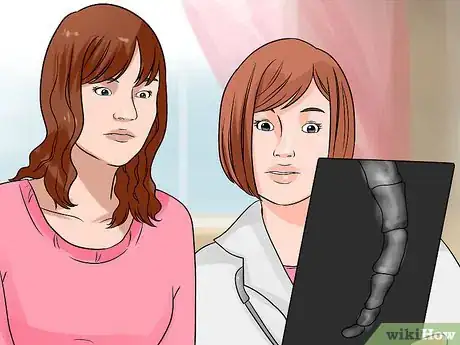
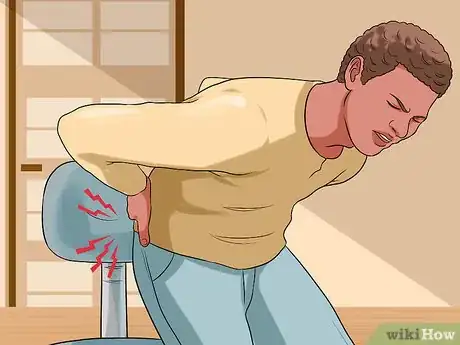


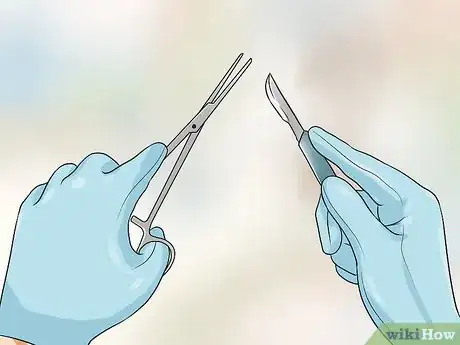
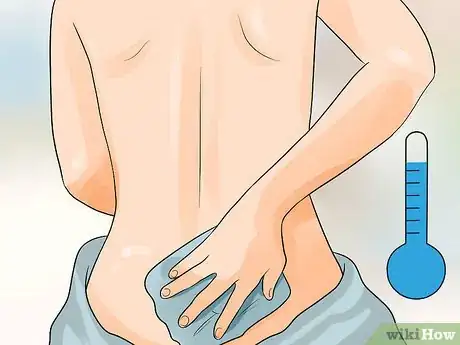


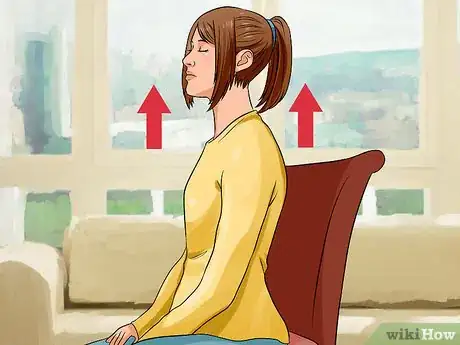
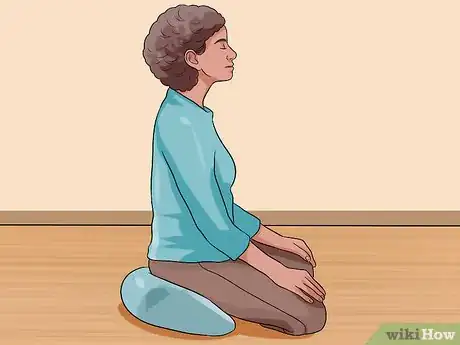
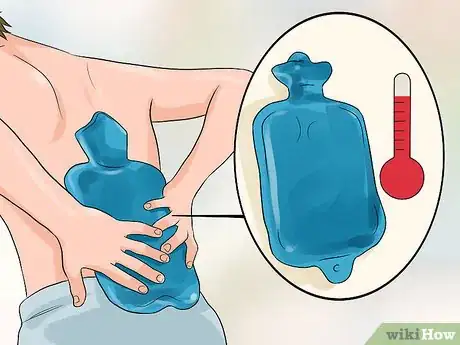
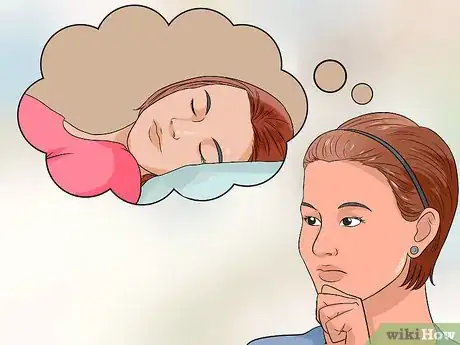
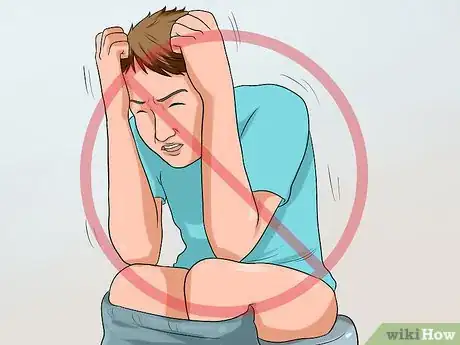
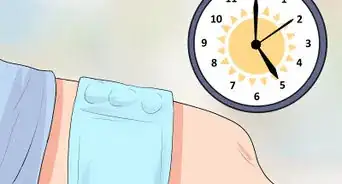
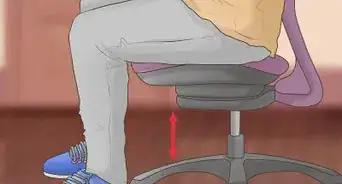
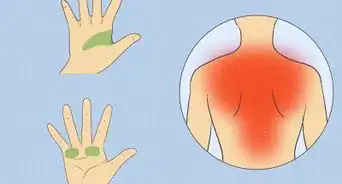
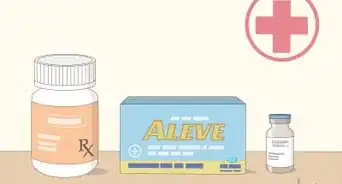
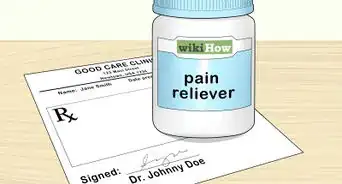
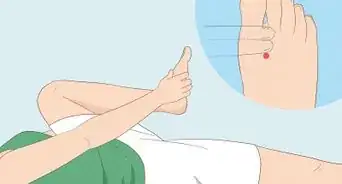
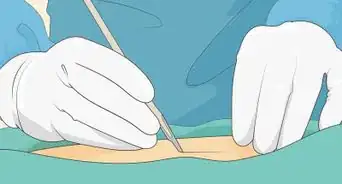
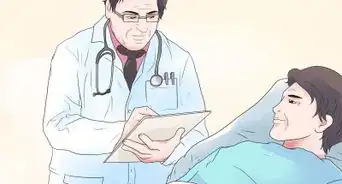

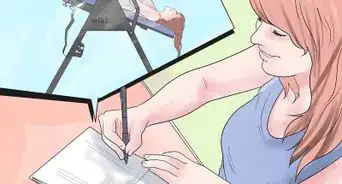


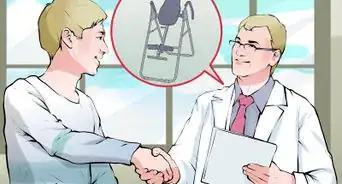











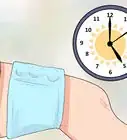
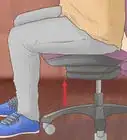
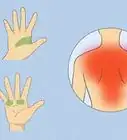
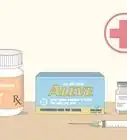



































Medical Disclaimer
The content of this article is not intended to be a substitute for professional medical advice, examination, diagnosis, or treatment. You should always contact your doctor or other qualified healthcare professional before starting, changing, or stopping any kind of health treatment.
Read More...